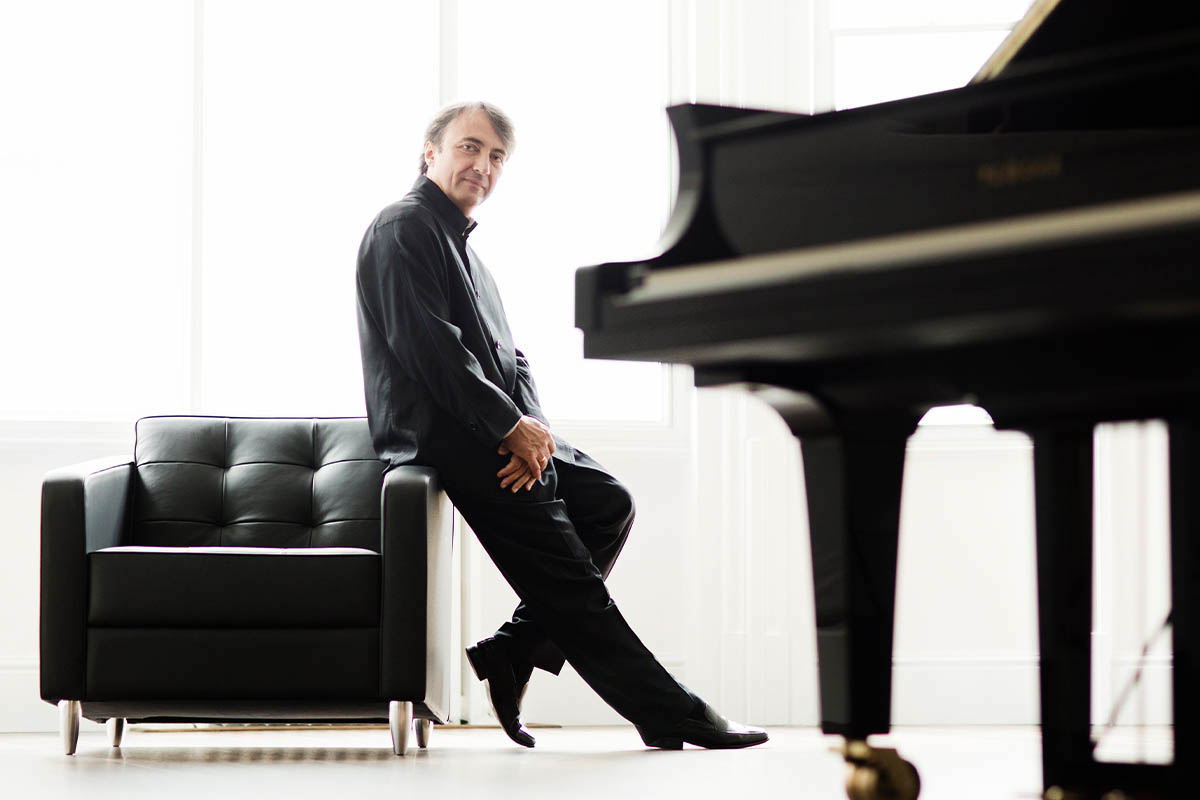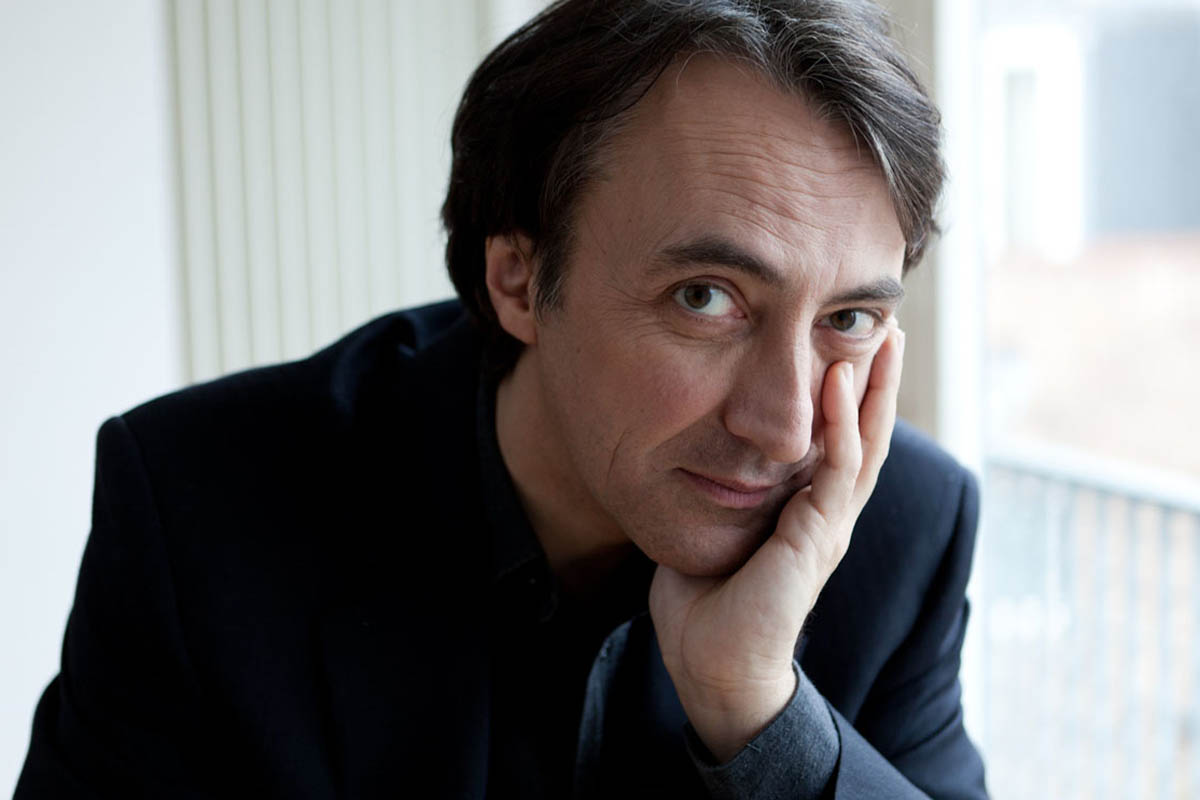What makes a piece of music a masterpiece? Is it the way it makes you feel? Is it that it captures the essence of the composer? Is it the opportunities for virtuosity and expressiveness that it affords a performer? Or is it depth and complexity, so that no matter what angle you look at it from, there is something fascinating to see?
For Jean-Efflam Bavouzet, Ravel’s Piano Concerto in G in just such a piece. The celebrated and acclaimed French pianist is returning to Australia in October to perform this piece with the Sydney Symphony Orchestra and Finnish conductor Pietari Inkinen, continuing his long and deep engagement with the work. Bavouzet has performed this concerto more than 100 times over his glittering career, including a 2010 recording for Chandos that won just about every award possible, and which the Penguin Guide called “simply one of the finest records of French piano music in the catalogue.” But even he remains fascinated by the work.

Jean-Efflam Bavouzet. Photo © Benjamin Ealovega
“It is a gem,” says Bavouzet over Zoom from a rehearsal studio in Cannes. “It is a little bit banal to say it is a perfect concerto, because there is no such thing as a perfect piece. But sure enough the Ravel, over the years, has really won the heart of the listeners.”
Ravel is a fascinating character. A perfectionist, he famously burnt the manuscripts for dozens of works that he didn’t think were good enough to be published. There are also stories of him as a ruthless disciplinarian, haranguing musicians who he didn’t think were doing justice to his compositions – more on that later. But incredibly, for a composer whose most famous works are piano pieces, Ravel was in fact a very ordinary pianist.
“Ravel actually was far from being a virtuoso,” says Bavouzet. “But he had this ingenious sense of writing for the piano which can be compared to Franz Liszt or Rachmaninov. But Ravel could hardly play his easiest piece!”
“That is one of the mysteries of music history, for me – how could he write so well for the piano? And write pieces that require countless hours to master? The beginning of Ondine, for example, from his Gaspard de la Nuit – the effect of the right hand shimmering, you play two bars of that and you immediately see the shimmering water and the light on the surface. This effect is one of the most difficult things ever written for the piano. And what is a mystery, for me, is that the effect is done only when it is played fast and pianissimo – which is of course what makes it so difficult. And he could not play it himself!”
The Piano Concerto in G was a work of which Ravel was extremely proud. And listening to it now, it is easy to see why. Though only around 20 minutes long, it packs an extraordinary range of ideas into its three movements, taking inspiration from the composer’s Basque heritage, jazz, and above all the influence of both Mozart and Saint-Saëns. In a 1931 interview, Ravel himself said: “My only wish… was to write a genuine concerto, that is, a brilliant work, clearly highlighting the soloist’s virtuosity, without seeking to show profundity. As a model, I took two musicians who, in my opinion, best illustrated this type of composition: Mozart and Saint-Saëns.”
For Bavouzet, it is a work that remained a mystery for many years.
“Ravel was very proud of it,” says Bavouzet, “and he said that it was very difficult for him to write this superb second movement. It sounds very simple for us now, the melody of the second movement. And he even uses the word ‘challenging’. That was a word that always puzzled me, at least for my good first 31 performances of it. I think I am close to 120 now. But for the first 30 performances, I could not understand what the challenge was that Ravel was referring to. Until I found it. And it is right in the middle of your face. But nobody has noticed it. Not even many, many conductors I have worked with, and pianists who have played it at least as much as me. I’m not going into technical details, but I think I have found the secret challenge Ravel was referring to.”
“But it took me 30 years!”

Jean-Efflam Bavouzet. Photo © Benjamin Ealovega
Bavouzet won’t reveal what this secret is – you’ll just have to hear him perform and try to work it out for yourselves – but is extremely thoughtful and considered in discussing the work more broadly.
“For me, a real masterpiece is a piece of music that you can take from very different angles, and every angle that you look at, you are amazed by the ingenuity. If you speak about the purely emotional, which is probably what people hear and feel first – the tenderness of this second movement, and the absolute joy of the last. It is extremely touching. But if you look at it from the construction of it, or an intellectual point of view, it is absolutely mind-boggling how he constructs this second movement. But also the first and the third!”
“Ravel wanted to write perfections – that’s why he erased and actually burned any pieces that he didn’t think were perfect. We have only perfect pieces from him. And the proof is that almost his entire output is played in concerts today. And you cannot say that about many composers. Certainly not Beethoven, certainly not Liszt, certainly not Mozart. Maybe Bach, and perhaps Alban Berg, are the only two composers I can think of where everything gets played. And even Bach, there is so much Bach you can never play all of it! But Ravel, everything he left us is played constantly.”
Clearly, even after these 120 performances, it remains a subject of great fascination for Bavouzet. Has his relationship to the work changed at all over the last 20 years?
“Inevitably, inevitably,” he says. “But probably less than with the Beethoven sonatas, or Beethoven’s music in general. [With] Ravel, everything is written, every tempo indication, all articulation, all the final details. It is inevitable that, when you spend so much time on a composer and then you leave it for a little, and then you go back to it, that your view will change. You will not be the same person – I am certainly not the same person that I was 25 years ago. Nobody can say that! You change political opinions, you change taste in food, in your relationship with your surroundings – of course, it is inevitable.”
“I would not say my relationship to it radically changed, but I would say it has evolved. What I hope is that I am not going too far from what the composer wanted. Ravel demanded that his music should not be interpreted, just played as written: ‘Play my music as written,’ he would say.”
“There is an anecdote that I love to tell about the Heymann Quartet, who premiered the Ravel Quartet. The story goes that Ravel was working with them, and he was constantly asking them to really respect the text to the smallest details. And at one point the first violin said, ‘But Maestro, we are not your servants!’ And Ravel said, ‘Yes, you are!’”
“So I am happy to be Ravel’s servant. The G Major is a wonderful, wonderful piece to play. And despite the fact I have played it many times, it is always a joy. Which is also a way to describe a masterpiece, you never get tired of it.”
Jean-Efflam Bavouzet performs Ravel’s Piano Concerto with the Sydney Symphony Orchestra, 12–15 October. Visit the Sydney Symphony’s website for tickets and more information.












Comments
Log in to join the conversation.